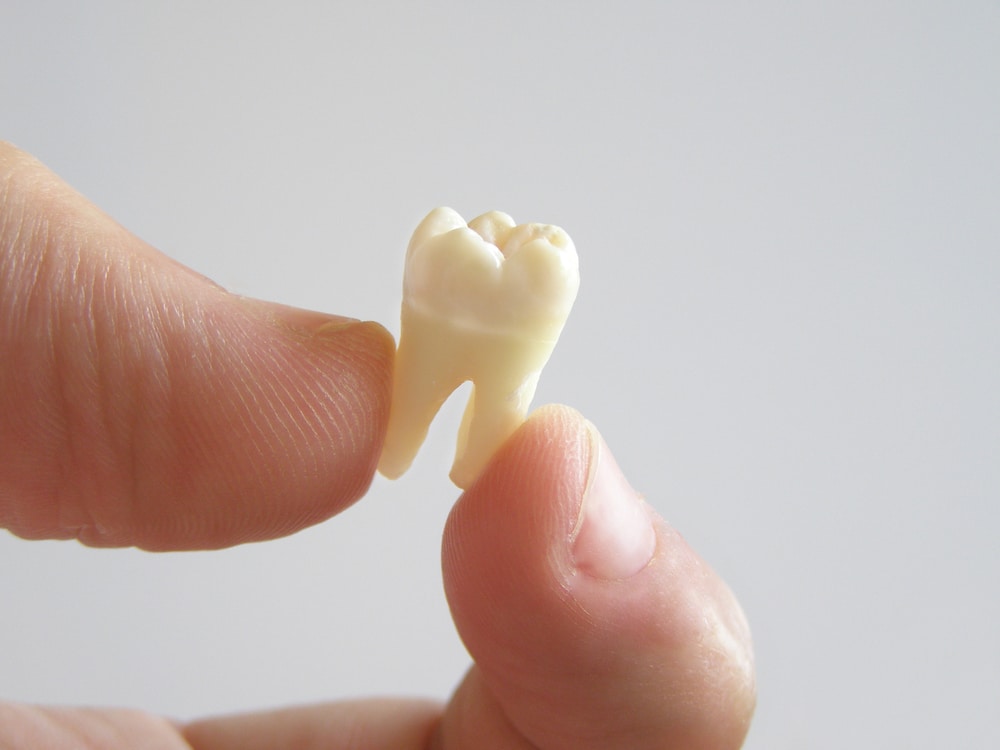Downtown Dental Excellence offers Tooth Extractions in Cleveland, TX
While we all would prefer to keep our natural teeth, this isn’t always an option. There are times when a tooth is damaged beyond repair, and needs to be pulled. When this is the case, a dentist will perform a tooth extraction.
Speak with Our Office About Tooth Extraction
If you have a loose or damaged tooth or teeth, visit your dentist. The can take a look at the tooth or teeth and determine the best course of action. If they decide tooth extraction is the best option, consider different tooth replacement options to ensure ongoing oral health.

Reasons for a Tooth Extraction
Tooth extractions are exactly what they sound like—they are the removal of a tooth or teeth. There are various reasons for a tooth extraction: some of which being completely unavoidable. One example of a reason why a tooth may need to be extracted that is not the fault of the patient is in the case of injury. A patient may fall down or be involved in a sports injury that results in a tooth or teeth being knocked loose. There also may be a situation in which a patient sustains damage to a tooth or teeth that caused them to be cracked beyond repair. In these cases, a tooth extraction may be the only option.
Another example of a reason for a tooth extraction that is not the fault of the patient is when wisdom teeth emerge. Most people end up having their wisdom teeth removed—whether it is because of the risk that they pose, or simply because the dentist has decided that it isn’t even worth giving the wisdom teeth a chance to pose a risk.
Another reason for a tooth extraction is neglect on the part of the patient. If a patient does not properly care for their teeth and gums, they may begin to suffer from gum disease (also known as periodontal disease). As periodontal disease progresses, bone loss may occur. Eventually, a tooth or teeth may need to be removed.
Tooth Extraction Process
The first step of a tooth extraction procedure is a consultation. If your teeth have been damaged or knocked loose, set an appointment with your dentist as soon as possible. If the teeth are severely damaged, you may need to visit an emergency dentist. Visiting an emergency dentist may mean the difference between being able to save your teeth, and needing to have your teeth extracted.
Once your dentist looks at your teeth, they will decide whether or not the teeth can be saved. If they decide that there is no way to save the damaged tooth or teeth, they will begin the tooth extraction procedure. For a simple tooth extraction, the dentist will numb the jaw, tissues and nerves and use a simple tool to pull the tooth.
There are some teeth that may need to be extracted in a more complex tooth extraction procedure, though. If wisdom teeth are being removed, for example, there will likely be a surgery necessary to remove the wisdom teeth. During this surgery, a patient will likely be given general anesthesia. The dentist will then surgically remove the teeth, and suture the areas where the teeth were removed back up.
Call Downtown Dental Excellence Today! (281) 592-0597
Call Downtown Dental Excellence Today! (281) 592-0597
Tooth Replacement Options
Besides wisdom teeth, teeth need to be replaced once they are removed. If the area is left without a replacement, certain oral health issues may occur, such as:
- Teeth Migration
- Gum Disease
- Tooth Decay of Surrounding Teeth
- Jaw Bone Loss
Because of this, a patient will want to consider different tooth replacement options after a tooth extraction.
One very popular option is a dental implant. An implant involves the placement of a titanium rod into the jawbone, that holds a false tooth in place. If the jawbone is strong enough to support the rod being placed, the dentist may suggest this option. If not, the dentist may suggest a bone graft, or a dental bridge.
Dental bridges are an excellent replacement option for patients that do not have the bone tissue that is required to place an implant. While dental bridges don’t offer the same support as implants, they still help to prevent teeth migration, and allow for a stronger bite.
Socket Grafting
A good option for bone grafting after a tooth extraction is socket grafting. This involves the placement of a grafting material right after the tooth extraction has been completed. Socket grafting helps to not only prevent the deterioration of the jawbone, but also helps to encourage the growth of new bone tissue. Once the bone has healed, a dental implant can be placed.
